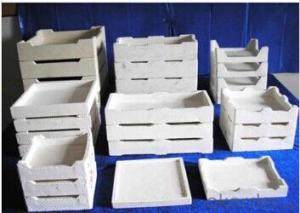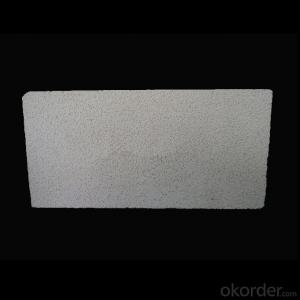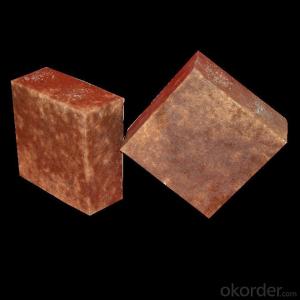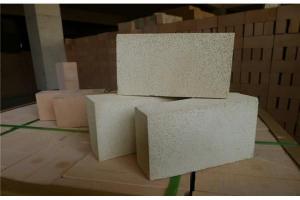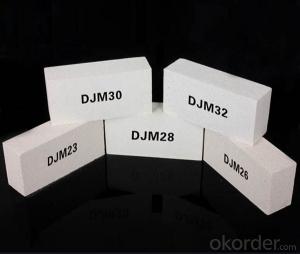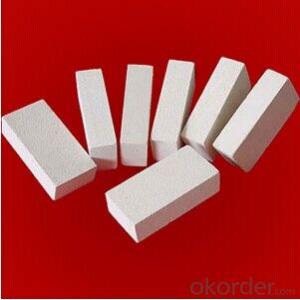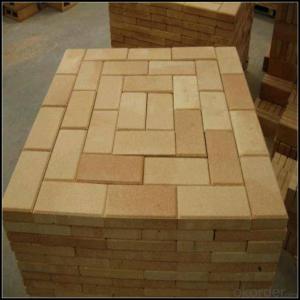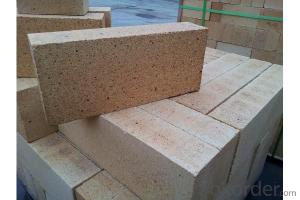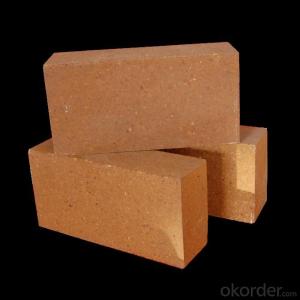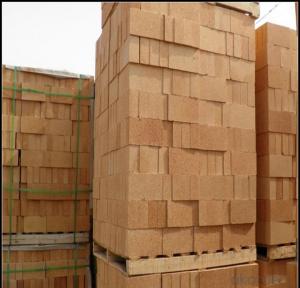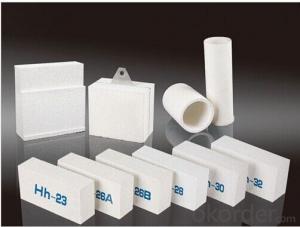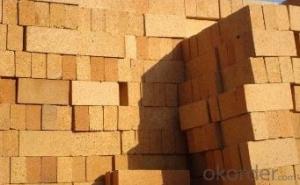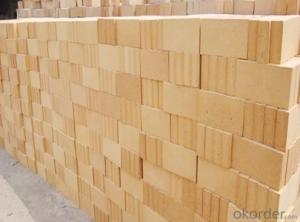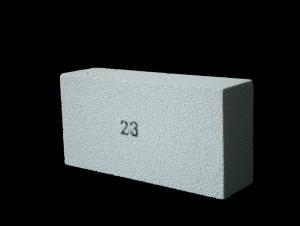Cordierite Kiln Furniture Insulating Fire Brick
- Loading Port:
- China Main Port
- Payment Terms:
- TT OR LC
- Min Order Qty:
- -
- Supply Capability:
- -
OKorder Service Pledge
OKorder Financial Service
You Might Also Like
Material: cordierite &mullite
It is used in heat shock applications that would crack and shatter most other ceramic materials, it can survive thousands of heating and cooling cycles.
it is characterized by high purity, high density, high strength and good thermal shock resistance, is mainly used as high temperature (1350-1650oC) kiln linings or kiln furniture in ceramics and refractories industries, gas combustion furnace in petrochemical industry and other high temperature services where thermal shock happens frequently.
Cordierite porcelain | ||||
Essential components | 2MgO 2Al2O3 5SiO2 | |||
| Density | g/cm3 | 2.5 | |
| Water Absorption |
| 0 | |
Material characteristics | Agglomeration temperature |
| 1350 | |
| Hardness | HV | 800 | |
| AntiFolding Strength | Kgf/cm2 | 900 | |
Physical characteristics | Compressive Strength | Kgf/cm2 | 3500 | |
Tenacity | Map.m3/2 | - | ||
| Highest application temperature |
| 1 000 | |
| Thermal expansion coefficient 0-1000 | / | 4*10-6 | |
Thermodynamic property | Heat resistance | T() | 250 | |
Thermal conductivity | W/m.k(25-300) | 1.3- | ||
|
| 20 |
| >1012 |
| 100 | >.cm | 107-108 | |
| Volume resistivity | 300 | 3*105 | |
Electrical specification | Insulation breakdown intensity | KV/mm | 10 | |
Dielectric constant | 100MHz(E) | 6 | ||
- Q: Can insulating fire bricks be used in the construction of smelter crucibles?
- Yes, insulating fire bricks can be used in the construction of smelter crucibles. These bricks are designed to withstand high temperatures and provide excellent insulation, making them suitable for use in smelting applications. They help to retain heat and minimize heat loss, ensuring efficient and effective smelting processes.
- Q: Can insulating fire bricks be used in high-temperature filters?
- Yes, insulating fire bricks can be used in high-temperature filters. These bricks are designed to withstand extreme temperatures and provide excellent insulation. They can effectively trap and filter out impurities in high-temperature environments, making them suitable for use in high-temperature filters.
- Q: Are insulating fire bricks easy to cut or shape?
- Compared to other bricks, insulating fire bricks offer a relatively simple cutting and shaping process. This is mainly because of their lower density and composition, enabling easier manipulation using standard masonry tools. However, it is crucial to acknowledge that the level of simplicity can differ depending on the specific type and brand of insulating fire brick. Some may demand special tools or techniques for cutting or shaping, while others may be more user-friendly. To ensure accurate cutting or shaping techniques, it is always advisable to refer to the manufacturer's instructions or seek professional guidance when working with insulating fire bricks.
- Q: Can insulating fire bricks be used for insulation in foundries?
- Yes, insulating fire bricks can be used for insulation in foundries. Insulating fire bricks have high insulating properties and can withstand high temperatures, making them suitable for use in foundries to reduce heat loss and improve energy efficiency.
- Q: Can insulating fire bricks be used in the construction of high-temperature reactors?
- Yes, insulating fire bricks can be used in the construction of high-temperature reactors. Insulating fire bricks are specifically designed to withstand high temperatures, making them suitable for applications in high-temperature environments such as reactors. These bricks have excellent thermal insulation properties, which helps in reducing heat loss and maintaining the desired temperature inside the reactor. Additionally, insulating fire bricks have a high refractoriness, meaning they can withstand extreme heat without significant deformation or damage. This makes them an ideal choice for constructing high-temperature reactors where maintaining a consistent and controlled temperature is crucial for the proper functioning of the reactor.
- Q: Can insulating fire bricks be used in chimney liners?
- Chimney liners can indeed utilize insulating fire bricks. These bricks are specifically designed to endure high temperatures and possess exceptional insulation capabilities. They find frequent use in various settings, such as kilns, furnaces, and fireplaces, where retaining heat is crucial. As chimney liners, insulating fire bricks serve a dual purpose. They shield the chimney walls from the intense heat produced by the fire and minimize heat dissipation. These benefits enhance the chimney's efficiency and mitigate the likelihood of harm to the adjacent structure. Nevertheless, it is imperative to seek guidance from a professional chimney technician or engineer to ensure that the chosen insulating fire brick type is appropriate for the desired application and complies with all pertinent safety regulations and building codes.
- Q: Can insulating fire bricks be used for insulation in boilers?
- Certainly, insulation in boilers can make use of insulating fire bricks. These bricks are specially engineered to endure extreme temperatures and offer exceptional thermal insulation. Their thermal conductivity is minimal, resulting in a significant decrease in heat dissipation and an enhancement in the energy efficacy of boilers. Moreover, insulating fire bricks are lightweight and simple to install, rendering them a favored option for boiler insulation. They aid in preserving elevated temperatures within the boiler, facilitating efficient combustion and heat transfer, while simultaneously shielding the outer framework from excessive heat. All in all, insulating fire bricks are a dependable and efficient alternative for boiler insulation.
- Q: What are the insulation materials for heating buried pipelines?
- Heating pipe insulation material should be heat-resistant, flame retardant, small thermal conductivity, low moisture absorption, no corrosion. In order to enhance the mechanical strength of the general production into a massive, commonly used rock wool pipe shell; superfine glass wool pipe shell, polyurethane foam pad pad; perlite insulation materials.
- Q: Can insulating fire bricks be used in the construction of heat recovery systems?
- Insulating fire bricks are a viable option for heat recovery system construction. These bricks are specifically designed to endure high temperatures and deliver exceptional thermal insulation, making them an excellent choice for heat recovery systems. They are crafted from lightweight materials, such as ceramic fibers or refractory materials, which possess low thermal conductivity. This feature enables them to effectively capture and retain heat, preventing its escape from the system and maximizing energy efficiency. Moreover, insulating fire bricks exhibit resistance to thermal shock, meaning they can withstand sudden temperature fluctuations without undergoing cracks or breakage. Consequently, they are well-suited for the fluctuating heat conditions commonly encountered in heat recovery systems. Ultimately, incorporating insulating fire bricks into the construction of heat recovery systems can enhance their performance and efficiency by reducing heat loss and optimizing energy recovery.
- Q: What is the typical creep resistance of an insulating fire brick?
- The creep resistance of insulating fire bricks can differ depending on their specific composition and manufacturing process. However, overall, these bricks possess excellent creep resistance properties due to their high temperature stability and low thermal conductivity. They are specifically designed to endure high temperatures and are commonly used in applications where thermal insulation and resistance to thermal stress are crucial, such as in kilns, furnaces, and other industrial processes involving high temperatures. Insulating fire bricks typically consist of lightweight refractory materials like alumina, silica, or other refractory oxides. These materials are chosen for their ability to withstand deformation and maintain their shape even at high temperatures. Creep refers to the gradual deformation or flow of a material under constant stress over time. In the case of insulating fire bricks, creep resistance pertains to their capacity to retain their structural integrity and dimensional stability when exposed to prolonged high temperatures. Insulating fire bricks are engineered to have low creep rates, meaning they exhibit minimal deformation or flow under sustained stress. This is achieved through the careful selection of raw materials, controlled manufacturing processes, and the incorporation of specific additives or binders that enhance the brick's creep resistance. While the exact values of creep resistance may vary, insulating fire bricks are generally designed to endure high temperatures and exhibit strong resistance to creep, ensuring long-lasting performance and durability in high-temperature environments.
Send your message to us
Cordierite Kiln Furniture Insulating Fire Brick
- Loading Port:
- China Main Port
- Payment Terms:
- TT OR LC
- Min Order Qty:
- -
- Supply Capability:
- -
OKorder Service Pledge
OKorder Financial Service
Similar products
Hot products
Hot Searches
Related keywords
